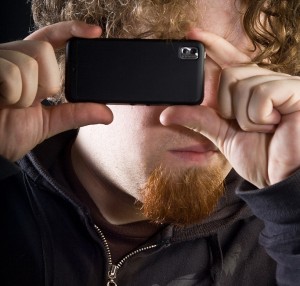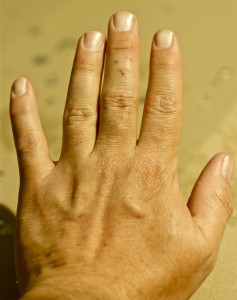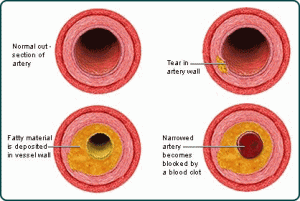
Indian researchers have developed a pain-free cholesterol test that uses digital cameras instead of needles. (Photo: Andrew Ferguson via Flickr/Creative Commons)
Checking your cholesterol could soon be as simple as snapping a picture of your hand.
Folks with an aversion to needles will welcome news that researchers in India have developed a cholesterol test which uses a digital camera instead of needles.
N.R. Shanker and his colleagues from the Sree Sastha Institute of Engineering and Technology write about their new, non-invasive cholesterol test in a recent edition of the International Journal of Medical Engineering and Informatics.
A snap shot of the back of a patient’s hand, taken with a digital or mobile phone camera, is cropped to focus on the finger creases where cholesterol tends to be concentrated and can be detected by the camera, according to researchers.
Using a special image processing computer program they developed, researchers compare the patient’s hand image to thousands of similar pictures contained within a large database.
The database images represent varying degrees of cholesterol levels and each image is linked to a measurement that had been taken with a standard cholesterol blood test.

Indian researchers say the creases between fingers on the back of the hand can indicate a person’s cholesterol levels. (Photo: David DeHetre via Flickr/Creative Commons)
If the non-invasive test shows a patient has a higher-than-normal total cholesterol level, a more extensive cholesterol blood test is administered to determine the specific levels of good (HDL) vs. bad (LDL) cholesterol in the patient’s blood stream.
Cholesterol is a waxy, fat-like substance the body produces to help keep it healthy. According to the National Institutes of Health, cholesterol makes hormones, vitamin D and substances that help digest food.
Our bodies produce two types of cholesterol, LDL (low-density lipoprotein) cholesterol and HDL (high-density lipoprotein).
Too much bad cholesterol can build up as plaque – a thick, hard deposit the artery walls. Continued buildup of this plaque can develop into a condition called arteriosclerosis, or narrowing of the arteries, putting a person at risk of heart disease, stroke or heart attack.
Good cholesterol, according to the American Heart Association, is thought to protect against heart attack.
Some researchers even believe that HDL can remove excess cholesterol from arterial plaque, slowing down its buildup on the walls of your arteries.
High levels of LDL cholesterol can be caused eating a diet that’s high in saturated fats or it could be genetic in nature passed along within a family from generation to generation.
Your bad cholesterol levels can also increase if you live a sedentary lifestyle.
Exercise can cause LDL levels to drop while levels of good (HDL) cholesterol rise.
So if you find that you have an elevated level of LDL cholesterol, bringing it back down to normal may be as easy as eating a healthy diet and getting some exercise.






















to make easy to know our cholesterol but who prepare program for special image processing to our notebook? can we do for myself?